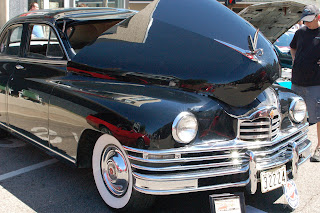Through the Great Depression and World War II, even as the economy suffered and the bulk of Americans were struggling to make ends meet, the luxury car manufacturer Packard was seeing strong sales and even growth.
As an independent company, Packard had some glowing disadvantages to some of its competition of the time. Cadillac had the rest of GM behind it to prop it up and absorb any potential losses. The same held true with Lincoln with Ford. But where Packard didn’t have a huge company to hide behind, they were also more streamlined and able to adapt and use a single line with interchangeable parts to maintain quality and keep overhead costs down. Packard was also able to adapt rapidly and did so during the Depression, keeping up the high end cars but also introducing some quality cars geared toward the dwindling middle class.
Like most American manufacturing, Packard turned their assembly lines toward the war effort during the 1940s, making engines for the famous P51 Mustang fighter as well as powerful V 12s for P.T. boats.
After the war Packard was in good financial shape. But that was to change. While many of the smaller independent companies saw the writing on the wall and started merging to solidify manufacturing and marketing strategies (see AMC and Kaiser-Willys), Packard continued to battle the Big Three from Detroit on their own. Though Packard had been courted by AMC to join up with them then did little more than supply engines and transmissions to them.
It wasn’t until the early 1950s when they saw the real handwriting on the wall and purchased another noble, reliable manufacturer, Studebaker. Though Packard was a smaller company than Studebaker, they were on more sound financial footing. What Packard didn’t realize at the time was just how bad Studebaker’s position really was.
The cost of absorbing and propping up Studebaker, a line more geared toward the masses, put a dent in Packard’s armor and caused them to lose footing in the luxury market. By 1959 the Packard name was all but abolished. Studebaker itself didn’t make it more than halfway through the 1960s and as it closed, so closed an important chapter in American automotive history.
For regular readers of this blog you will realize that I’ve covered numerous Packards. A beautiful 1946 Super Custom Clipper Henney was featured here http://most-popularcar.blogspot.com/2011/06/it-drives-like-ocean-liner.html. Also, I’ve written about my friend Dale Schultz and his 1949 Super Eight here http://most-popularcar.blogspot.com/2011/10/this-is-way-to-do-it.html.
Here are some more Packard pictures (yes, some of Dale’s beauty) to remind you of the magnificence of this once iconic luxury brand.


















0 comments:
Post a Comment